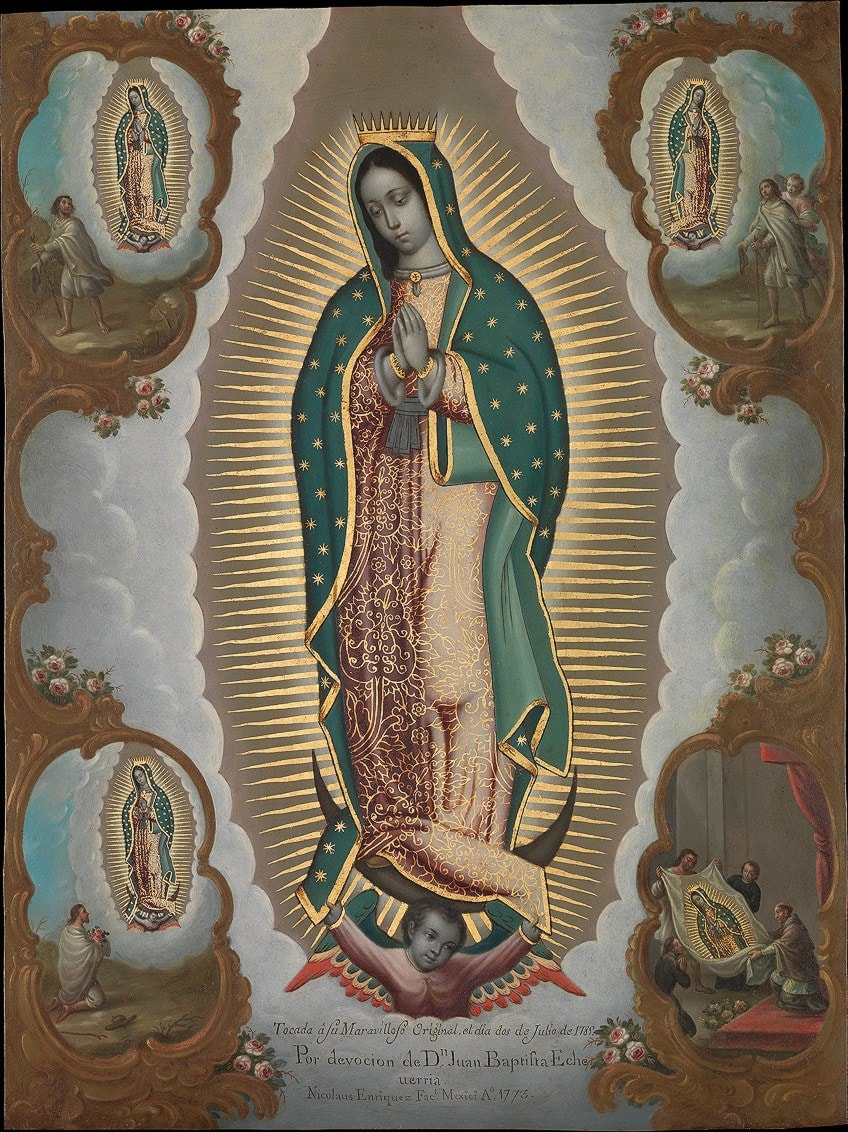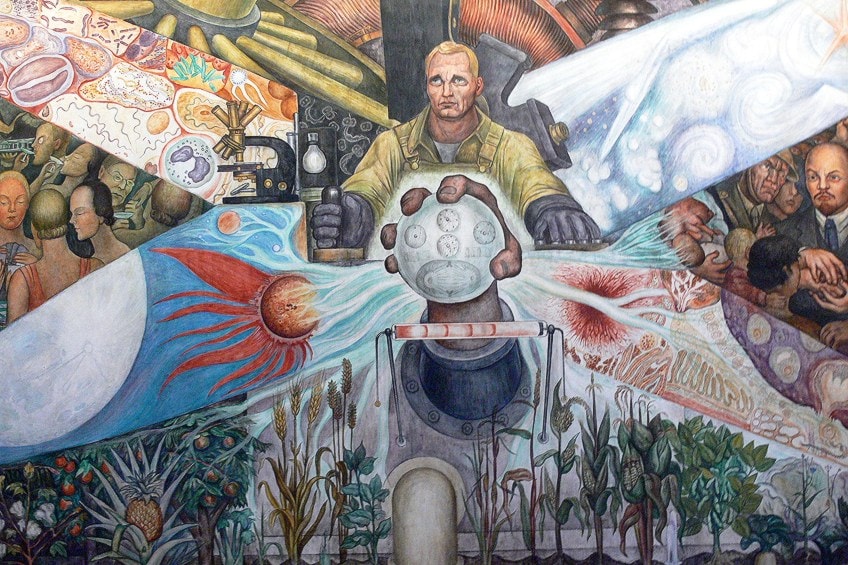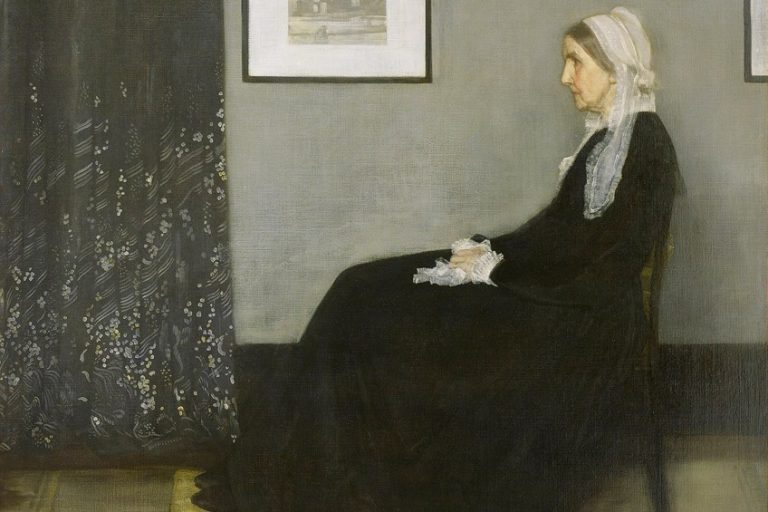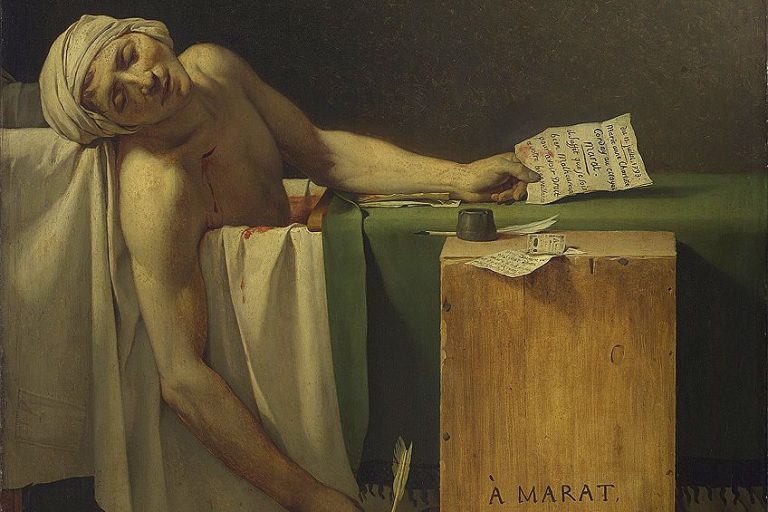Famous Mexican Paintings – The Most Famous Art in Mexico
Mexican culture has birthed some of the finest paintings and sculptures since its precolonial era, which includes art from Mesoamerica. This article will introduce you to a brief overview of Mexican art and highlight some of the most famous Mexican paintings that have captured the attention of the global art community.
An Overview of Mexican Art and History
Many tend to focus on the artworks and great masters of Europe without gaining a full scope of other regions of incredible talent from around the world. The examination of Mexican art is often reduced to the artworks produced under pre-colonial history and is one of the most underappreciated areas of study. As with many areas that faced colonial interruption and division, Mexico was also exposed to many historical and political upheavals, the most well-known events being the Spanish conquest, the Mexican War of Independence, and the Mexican Revolution.
The 19th century was a period in Mexico that saw the development of the country’s national identity through art.
Prior to the emergence of Modern Mexican art, Mesoamerican art thrived and originated from what is now the southern and central parts of Mexico. The majority of Mexican art prior to the Spanish conquest was greatly informed by religion and indigenous practices, and the distinction between what was art and culture became blurred.
Art that was produced under Spanish rule, which lasted for approximately 300 years, was concentrated on the decoration and architecture of churches and included casta paintings, historical paintings, and portraits of the 18th century. The influence of European art on Mexican art during this time was high, with the majority of late colonial-era creatives receiving training from the Academy of San Carlos.
Mexican art during this period was not entirely made up of European approaches and subjects but was more of a “balancing act” between incorporating indigenous cultural art elements with European styles and teachings.
The 1810 Mexican War of Independence, which lasted until 1821, brought about immense political turmoil as Mexico strived to gain its independence from the Spaniards. The event did not occur in one setting, as often thought of, but was informed by a series of local and regional conflicts that can be understood as a revolution or civil war. Although the outcome of independence was not guaranteed, the Spanish faced their own threats in Spain with the 1808 invasion by Napoleon Bonaparte and the resultant abdication of Charles IV.
As the conflicts progressed in Mexico and among the Spanish, Mexico saw many religious and cultural divisions as well as the implementation of the Spanish Constitution in 1812. This new document sought to outline a new government framework in light of the removed monarchy and attempted to cater to the needs of the criollos (American-born Spanish individuals) and reconciliation of the people with the peninsulares (Peninsula-born Spanish people).
The American-born Spanish group supported the revolt for independence from Spanish rule and one of the key moments during this time was informed by the Cry of Dolores, which was issued by a Parish priest called Miguel Hidalgo y Costilla in 1810.
This sparked the beginning of the revolt, which lasted for many years and spread to the northern part of Mexico City and the Gulf Coast. After Napoleon’s defeat, Ferdinand VII took control and attempted to restore an absolutist rulership, but was soon overthrown by the Spanish liberals in 1820. The royal government eventually fell and the conflict was halted by the Treaty of Córdoba in 1821. Mexico finally gained its independence in 1836 during the reign of Isabella II and after many attempts by the Spanish to regain control.
The Top 10 Most Famous Mexican Paintings
One of the greatest Mexican art movements includes the Mexican Muralist movement, which was headed by many famous artists such as Fernando Leal, Diego Rivera, and José Clemente Orozco, who received commissions from the post-Mexican Revolution government to produce artworks that provided a visual story of Mexican culture and history.
Below, we will explore a few famous Mexican paintings as well as the visual narratives they convey.
Virgin of Guadalupe with the Four Apparitions (1773) by Nicolás Enríquez
| Artist | Nicolás Enríquez de Vargas (1704 – 1790) |
| Date | 1773 |
| Medium | Oil on copper |
| Dimensions (cm) | 56.5 x 41.9 |
| Where It Is Housed | Metropolitan Museum of Art, New York |
Nicolás Enríquez was a painter of the Novohispanic era and recognized as one of the students of Juan Rodríguez Juárez, who was a notable Spanish painter. Enríquez created this iconic and highly worshiped painting of the Virgin Mary of Guadalupe around 1773 and it has since become one of the most popular images from the New Spain regime.
This painting is said to be a copy of the original artwork, acheiropoieta, made in 1531, which portrayed the Virgin descending onto Mount Tepeyac. The image of the Virgin is surrounded by four scenes that serve as records of the Virgin’s appearance to a recently transformed Christian devotee, Indian Juan Diego at Tepeyac (close to Mexico City). According to the account, the Virgin instructed Diego to tell the bishop that she needed a temple to be constructed for her.
The Virgin of Guadalupe is an iconic figure that represents the spread and influence of Catholicism in Mexico and its significance to both the Nahuatl, an indigenous group of people, and the Spanish.

Saint Charles Borromeo Handing out Alms to the People (1853) by José Salomé Pina
| Artist | José Salomé Pina (1830 – 1909) |
| Date | 1853 |
| Medium | Oil on canvas |
| Dimensions (cm) | 215 x 280 |
| Where It Is Housed | Museo Nacional de Arte, Mexico City, Mexico |
José Salomé Pina was a famous 19th-century Mexican painter who is commonly associated with the Nazarene movement. This famous painting by Pina was made specifically with the intention of hanging in the San Carlos Academy meeting room.
The painting illustrates the patron saint donating clothing to the poor people who are gathered before him.
To the patron’s right, priests are seen holding a basket of bread and a crosier. The Gothic church in the background bears a resemblance to the Cathedral of Milan and serves to outline the relationship between the institution and Saint Charles, which also refers to the protection that the institution offered its students and educators. This painting was received so well by the institution that Pina was awarded a scholarship to study in Rome.

Prometheus (1930) by José Clemente Orozco
| Artist | José Clemente Orozco (1883 – 1949) |
| Date | 1930 |
| Medium | Fresco |
| Dimensions (cm) | 610 x 870 |
| Where It Is Housed | Frary Dining Hall, Pomona College, Claremont, California, United States |
One of the greatest contributors to the founding of the Mexican Mural Renaissance, José Clemente Orozco was a famous Mexican caricaturist and painter of large politically-driven murals. Inspired by machines and intrigued by the common theme of human suffering, Orozco was heavily influenced by Symbolism and was incredibly dedicated to supporting the political causes and concerns of local people and those who were often underrepresented and unheard.
Orozco’s famous mural of Prometheus was commissioned for display at the Neo-Gothic men’s dining hall in Pomona and depicts figures and scenes from ancient Greek mythology of the Titan known as Prometheus, who is seen in the main panel.

José Clemente Orozco, Public domain, via Wikimedia Commons
The scene illustrates Prometheus reaching toward a fire, which was to become a gift for the humans but later turned into the reason for Prometheus’ punishment by Zeus. Prometheus is seen encircled by a crowd of people who display mixed reactions to the gift.
According to art historians, the painting is said to serve as a metaphor for the difficulties associated with seeking out knowledge and gaining expansion in knowledge in relation to the presence of conservative authorities.
The mixed reactions of the figures in the fresco suggest the dual nature of human development, that as much as it comes with its benefits, it also comes with strife. The significance of the mural to Orozco is also evident, since the proposed meaning could allude to the personal accounts of the artist’s struggle with opposing parties who disagreed with his political beliefs.
Caballista del Circo (1932) by María Izquierdo
| Artist | María Izquierdo (1902 – 1955) |
| Date | 1932 |
| Medium | Watercolor and gouache on paper |
| Dimensions (cm) | 27.9 x 21.5 |
| Where It Is Housed | Blanton Museum of Art Collection |
This famous Mexican painting by one of the first Mexican female artists to exhibit work in the United States, María Izquierdo, is also known as Amazona Blanca, which translates to “White Horsewoman” in English. It is also sometimes referred to as Circus Rider.
The painting portrays a confident woman stationed on a horse and is seen as an image of courage.
The woman is a circus performer and the painting is thus a celebration of female circus performers since Izquierdo was also quite fond of the circus since her childhood and the figure of the performer became an alter ego for the artist. This challenged the current norm in Mexican painting as most paintings were centered on male figures and heroes following the Mexican Revolution.
El Hombre en La Encrucijada (1934) by Diego Rivera
| Artist | Diego María de la Concepción Juan Nepomuceno Estanislao de la Rivera y Barrientos Acosta y Rodríguez (1886 – 1957) |
| Date | 1934 |
| Medium | Fresco |
| Dimensions (m) | 4.80 x 11.45 |
| Where It Is Housed | 30 Rockefeller Plaza, New York |
This 1934 painting is considered one of the most famous Mexican paintings by popular Mexican artist Diego Rivera, who specialized in mural paintings and whose works are considered national monuments of Mexico. Man at the Crossroads, as it is known in English, is a massive fresco that illustrates the different aspects of social and scientific Mexican culture. Rivera is also one of the most well-known creators of famous art in Mexico City.
The painting was made famous through its controversial history associated with the Rockefeller family and the eventual destruction of the original painting.
The painting that is located in the current Rockefeller Plaza in New York City is a copy of the original. According to the history of the original painting, Rivera installed the painting as a triptych with the middle section portraying a laborer controlling machinery and was accompanied by two other panels that served as representations of Capitalism and Socialism.

Initially, the Rockefeller Plaza’s approved of the idea behind the painting and its depiction of the differences between Capitalism and Communism but after the painting stirred up the attention of the New York World-Telegram, Rivera decided to include images of a Soviet May Day parade and Vladimir Lenin. The new additions were not well-received by the Rockefeller Center director, and Rivera was instructed to remove the images.
After refusing to budge, Rivera’s original fresco was destroyed and plastered over before it could be finished, which, as you can imagine, caused quite an uproar among the Mexican artist community.
In 1934, the painting was peeled off and another mural commenced in its place by Josep Maria Sert. No documentation of the original painting remains, but Rivera soon recreated his work under a different title, Man, Controller of the Universe. The entire narrative behind the painting and the engagements that ensued due to the conflict can be seen in the 1999 film Cradle Will Rock and the 2002 film Frida.
Echo of a Scream (1937) by David Alfaro Siqueiros
| Artist | José de Jesús Alfaro Siqueiros (1896 – 1974) |
| Date | 1937 |
| Medium | Enamel on wood |
| Dimensions (cm) | 121.9 x 91.4 |
| Where It Is Housed | Museum of Modern Art, New York |
Echo of a Scream, painted in 1937, relays the importance of not only the impact of Surrealism on the painting landscape of Mexico but also the impact of the many historical wars that affected the local people. David Alfaro Siqueiros is one of Mexico’s most celebrated artists who was well-known for his Social Realist paintings and public murals.
Siqueiros was also a member of the Mexican Communist Party and an advocate for Stalinism.
This famous Mexican artwork depicts an image of a crying infant or toddler in an incredibly bleak and unsettling landscape that echoes the trauma of loss in the aftermath of war and the impact that human loss has on children. The tragedy that lay in the wake of the Spanish conquest and the revolution was immense and while Mexico’s independence is celebrated, many forget the bloodshed that accompanied it.
Autorretrato con Collar de Espinas (1940) by Frida Kahlo
| Artist | Magdalena Carmen Frida Kahlo y Calderón (1907 – 1954) |
| Date | 1940 |
| Medium | Oil on canvas on masonite |
| Dimensions (cm) | 47 x 61 |
| Where It Is Housed | Harry Ransom Center, Austin, Texas |
Described as a Magical Realist and pioneer of the exploration of identity, Mexican culture, race, and class in Mexico, Frida Kahlo is one of the most revered Mexican artists of all time. Kahlo’s paintings were deeply informed by her personal experiences with chronic pain and her interest in Mexican popular culture.
Kahlo’s art and painting style is associated with the post-Mexican revolutionary movement called the Mexicayotl movement, which was centered on defining Mexican identity.
Painted in 1940, this famous Mexican painting, titled Self-Portrait with Thorn Necklace and Hummingbird in English, is a classic example of Kahlo’s use of Mexican culture in defining her artistic aesthetic and featured powerful iconographic imagery rooted in traditional Mexican culture. The image of the dead hummingbird in her self-portrait is seen hanging like a necklace pendant around her neck and was considered a charm for good luck in falling in love according to Mexican folklore. Other interpretations of the hummingbird include the pendant placement serving as a symbol for the Aztec God of war, Huitzilopochtli.

In contrast to the good luck charm, Kahlo also includes a black panther seen behind her left shoulder, which was a symbol of bad luck and death. The monkey symbolizes evil and is a nod to the gift she received from Diego Rivera, who was her on-and-off romantic partner, who gifted her a spider monkey. The monkey is seen tugging on her thorny necklace, which may represent the thorny crown that Jesus Christ wore and can therefore allude to the fact that Kahlo saw herself as a Christian martyr who experienced the bad luck of failed romance. The landscape in the background serves as a symbol of fertility and is a strong contrast to the symbols of death in the foreground.
Frida Kahlo was also known to be a strong advocate for the Mexican Revolution and even tried to change her record of birth to match the date of the beginning of the revolution.
During the revolution, a trend called the “cult of Mexican femininity” was popular and was seen as a means of martyrdom and self-sacrifice through the erasure of self. Kahlo rejected this limited view of femininity and instead took on the identity of a Tehuana woman. Her selection for this identity was informed by the fact that the Tehuana culture displayed equality with their Zapotec male counterparts and was representative of strength, exoticism, and sensuality. Kahlo is an artist who, in a way, evokes the complex nature of symbolism and cultural beliefs in Mexican artwork.
The Magical World of the Maya (1963 – 1964) by Leonora Carrington
| Artist | Mary Leonora Carrington (1917 – 2011) |
| Date | 1963 – 1964 |
| Medium | Casein on wood |
| Dimensions (cm) | 213 x 457 |
| Where It Is Housed | National Museum of Anthropology and History, Mexico City |
Popular Surrealist artist Leonora Carrington was a British-born Mexican painter whose painting, The Magical World of the Maya is one of the most famous Mexican artworks that provide an artistic interpretation of the 1960s Mayan culture.
Carrington relied on historical references as well as Mayan codices to reimagine a culture that is often associated with the ancient world.
The artist not only collaborated with anthropologists on her work on Mayan culture but she also drew reference to her personal poetics. Carrington also includes a few cosmic representations of the divine as seen in the bright rainbow in the center of the mural and a personified version of the God of rain, Chac.

Dualidad (1964) by Rufino Tamayo
| Artist | Rufino del Carmen Arellanes Tamayo (1899 – 1991) |
| Date | 1964 |
| Medium | Mural |
| Dimensions (cm) | Dimensions Unavailable |
| Where It Is Housed | National Museum of Anthropology, Mexico City |
This large and popular mural was created by one of Mexico’s most famous painters, Rufino Tamayo, who was commissioned by the National Museum of Anthropology in Mexico City to provide a modern perspective on pre-Hispanic and Mexican nationalism for a contemporary addition to the museum.
This mural is a combination of pre-Hispanic thinking as represented by the cosmogonic legends of the Nahua, including images of the jaguar and the serpent, representative of the Quetzalcoatl and the Tezcatlipoca conflict.
The two deities depicted in the mural are the sons of Omecihuatl and Ometecuhtli. The gods are portrayed as engaged in a fight, which symbolizes the movement of important universal energies that form the cosmic era and are made up of “the creation” of the earth, living, and celestial bodies. The scene alludes to the dual nature displayed in the iconographic reference and is often understood as the duality of both night and day represented through the battle between the jaguar and the snake.
Untitled (2015) by Manuel Felguérez
| Artist | Manuel Felguérez (1928 – 2020) |
| Date | 2015 |
| Medium | Oil on canvas |
| Dimensions (cm) | 190.5 x 381 |
| Where It Is Housed | Private collection |
In a balancing act between chaos and order, Manuel Felguérez created one of the most popular Abstract paintings of the 21st century. Untitled (2015) gives us a glimpse into the artist’s use of materiality and abstraction in conjunction with geometry to outline a structure for understanding chaos and order within the realms of multidimensional space. Manuel Felguérez was a pioneer in Mexican art during the 1950s and was part of a group of artists who rejected the approach to painting as seen in the Mexican School through Muralism.
This was the era of the Rupture movement that was coined by Octavio Paz in response to the generational shift. The movement strove towards pushing ideals that allowed for greater aesthetic freedom.
These top ten famous Mexican artworks are only the tip of the iceberg when it comes to the display of Mexican culture, heritage, and history. In the history of Mexican art, paintings have taken on a role that extends beyond the realms of history and the act itself has become a medium that allows for the expression of the impact that tumultuous series of conflicts have had on many indigenous groups of Mexico. Some important examples of famous art in Mexico include “Omnisciencia” (1925) by José Clemente Orozco, “The History of Mexico” (1929-1935) by Diego Rivera, and “La marcha de la humanidad en la Tierra y hacia el cosmos” (1964-1971) by David Siqueiros.
Frequently Asked Questions
What Is the Most Expensive Mexican Painting?
The most expensive Mexican painting sold for $34.9 million and was a self-portrait called Diego and I (1949) by Frida Kahlo.
Who Are the Most Popular Mexican Painters?
The most popular Mexican painters include Diego Rivera, Frida Kahlo, José Clemente Orozco, David Siqueiros, Rufino Tamayo, María Izquierdo, and Remedios Varo.
What Are the Major Art Movements in Mexican Art History?
The major art movements in Mexican art history include Magic Realism, Mexican Muralism, Surrealism, Social Realism, Abstract Expressionism, the Rupture movement, and Neomexicanismo.
Isabella studied at the University of Cape Town in South Africa and graduated with a Bachelor of Arts majoring in English Literature & Language and Psychology. Throughout her undergraduate years, she took Art History as an additional subject and absolutely loved it. Building on from her art history knowledge that began in high school, art has always been a particular area of fascination for her. From learning about artworks previously unknown to her, or sharpening her existing understanding of specific works, the ability to continue learning within this interesting sphere excites her greatly.
Her focal points of interest in art history encompass profiling specific artists and art movements, as it is these areas where she is able to really dig deep into the rich narrative of the art world. Additionally, she particularly enjoys exploring the different artistic styles of the 20th century, as well as the important impact that female artists have had on the development of art history.
Learn more about Isabella Meyer and the Art in Context Team.
Cite this Article
Isabella, Meyer, “Famous Mexican Paintings – The Most Famous Art in Mexico.” Art in Context. November 3, 2022. URL: https://artincontext.org/famous-mexican-paintings/
Meyer, I. (2022, 3 November). Famous Mexican Paintings – The Most Famous Art in Mexico. Art in Context. https://artincontext.org/famous-mexican-paintings/
Meyer, Isabella. “Famous Mexican Paintings – The Most Famous Art in Mexico.” Art in Context, November 3, 2022. https://artincontext.org/famous-mexican-paintings/.











